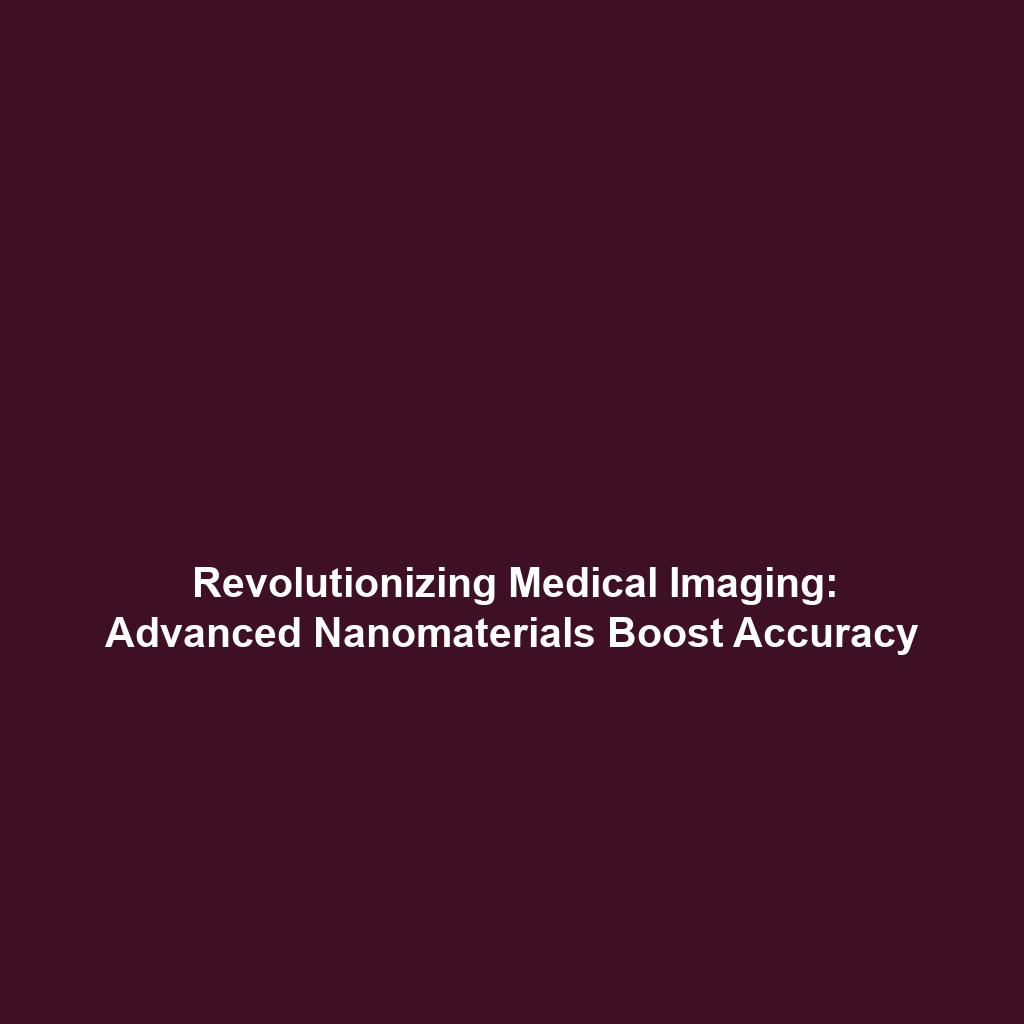Medical Imaging and Diagnostics: Enhancing Sensitivity and Accuracy with Advanced Nanomaterials
Introduction
Medical imaging and diagnostics have undergone transformative advancements, crucial for improving patient outcomes. Advanced nanomaterials play a pivotal role in enhancing the sensitivity and accuracy of imaging techniques, providing clinicians with the ability to detect diseases at earlier stages. This article delves into the significance of integrating advanced nanomaterials into medical imaging, exploring how they elevate diagnostic capabilities through better image quality and precision. As the intersection of nanotechnology and medical diagnostics continues to evolve, the promise of significantly enriched imaging processes becomes ever more compelling.
Key Concepts
Understanding Medical Imaging
Medical imaging encompasses techniques such as MRI, CT scans, and ultrasound, which visualize internal body structures. By leveraging advanced nanomaterials, these techniques can achieve:
- Enhanced Sensitivity: Nanomaterials increase the contrast and signal strength in images, making it easier to identify small abnormalities.
- Improved Accuracy: The precision offered by nanotechnology minimizes the likelihood of false positives and negatives.
Nanomaterials in Diagnostics
Nanomaterials, including nanoparticles and nanostructures, enhance various imaging modalities by serving as contrast agents or markers, aiding in the early detection of diseases.
Applications and Real-World Uses
Advanced nanomaterials are revolutionizing the field of medical imaging and diagnostics through several applications:
- Targeted Imaging: Utilizing nanoparticles that bind specifically to cancer cells, improving the visualization of tumors in imaging scans.
- Biomarker Detection: Functionalized nanomaterials enable real-time detection of biomarkers in bodily fluids, aiding in rapid diagnosis.
- Enhanced Image Reconstruction: Algorithms combined with nanomaterials provide high-resolution images from lower doses of radiation.
These applications illustrate how medical imaging and diagnostics is used in the realm of advanced nanomaterials to enhance sensitivity and accuracy.
Current Challenges
Despite significant advancements, challenges remain in the integration of advanced nanomaterials in medical imaging and diagnostics:
- Scalability: Producing nanomaterials at scale remains a hurdle, impacting widespread application.
- Regulatory Hurdles: Navigating the regulatory landscape for new nanotechnology applications can be complex and time-consuming.
- Bio-compatibility: Understanding the interaction of nanomaterials within biological systems is crucial to ensure safety and efficacy.
These issues in medical imaging and diagnostics highlight the challenges of applying advanced nanomaterials effectively.
Future Research and Innovations
The future of medical imaging and diagnostics looks promising with ongoing research focusing on:
- Next-Generation Imaging Agents: Development of multifunctional nanoparticles that can simultaneously deliver therapeutic agents while providing imaging capabilities.
- AI Integration: Combining artificial intelligence with advanced nanomaterials to improve diagnostic accuracy and speed.
- Smart Imaging Systems: Creating responsive imaging systems that adjust to the biological environment using nanomaterials.
Such innovations are expected to drive breakthroughs in medical imaging and diagnostics, leveraging the full potential of advanced nanomaterials.
Conclusion
In summary, the integration of advanced nanomaterials into medical imaging and diagnostics significantly enhances sensitivity and accuracy, paving the way for earlier disease detection and improved patient care. As challenges are addressed and new innovations emerge, the field is set for transformative growth. For further insights, explore related topics on advancements in nanotechnology and its implications in healthcare.
